Review: LG G5 for AT&T
Apr 1, 2016, 10:00 AM by Eric M. Zeman
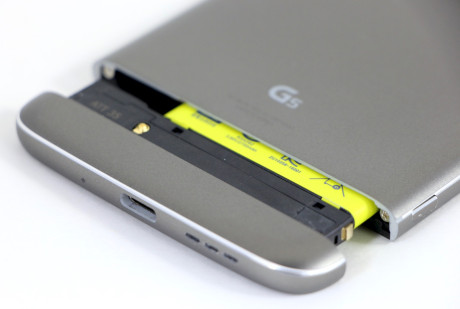
LG took a bold step forward with the G5, an Android smartphone that adopts a modular design for added functionality. The G5 shows LG thinking a bit outside the box in an attempt to win over consumers. The G5 is a worthy rival to the flagships from Apple and Samsung, but it isn't for everyone. Here is Phonescoop's full review.
Hardware
Is It Your Type?
The G5 is a daring experiment from our friends at LG. It is the first modern flagship phone to adopt a modular approach in its design, allowing separate accessories to plug into the bottom. This makes the G5 an interesting alternative in today's market of me-too slabs. If you're bored by the more conservative approach taken by Apple and Samsung, the LG G5 offers a refreshing take on the high-end smartphone.
Body
The G5 represents a sea change for LG in many ways. To start, LG has (finally) taken a page from its competitors and dropped the chintzy plastics used on previous flagships in favor of a metal design. Like it or not, this was a necessary and overdue step for LG. Apple, Samsung, HTC, and myriad Chinese phone makers have all been making great-feeling metal phones for a while now.
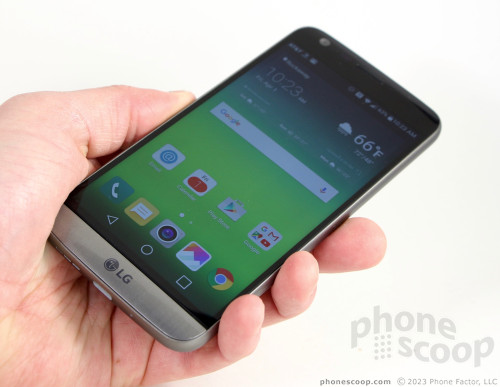
At the same time, LG has mostly dropped the design language that's dominated its phones the last few years. The G5 loses the trio of rear-mounted controls, for example, and the heavily curved shape of its predecessors. It's more usable than the G4 and G3, and more appealing to the eyes. We can't leave out the modularity aspect, which is a bold move. The interchangeable "LG Friends" add an entirely new and unique dimension to the G5. Despite the big changes, LG retained some important features, such as a removable battery and memory card.
The G5's metal design features a unibody chassis, but it might fool you into thinking there are several separate parts. The side edges are wrapped in metal, and a solid panel forms the rear surface. Along the corners, where the side and rear surfaces meet, you'll see a chrome finish that helps define the phone's shape a bit. A glass panel forms the front.
The metal band, rear panel, and front panel all come to a well-defined halt, where it almost looks as if the bottom 10% of the chassis were chopped off cleanly with a sword. The phone's chin — a removable module — is made of metal and plastic. From the front, you can't really tell than the chin is a separate piece, but the stark lines across the side edges and back surface make the module stand out visually when you view the phone from an angle or behind.
One thing I disliked about last year's G4 was the sharp corners. They often dug into my leg when the phone was in my pocket. The G5 is smoother all the way around. The rear panel and overall chassis are flat and the corners rounded pleasantly to improve how the phone feels in the hand. The G5 probably has a bit less personality than the G4 — the shape is more conservative taken as a whole — but the trade-offs in usability are worth it.
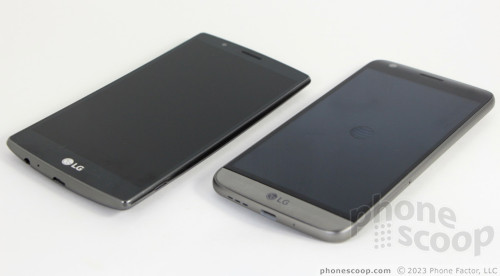
In terms of size, the G5 is larger than the Galaxy S7 and the iPhone 6s, but not by too much. It's worth pointing out that the G5 has the largest screen of these three (5.3 inches, v. 5.1 and 4.7 inches, respectively), and this plays a role in determining its size. The G5 is easy to carry around and use, and I found it was not overly large or bulky. It fits into pockets without issue.
The materials and hand feel are not perfect. The iPhone has a more seamless experience, and the S7, even with its glass rear panel, feels stronger thanks to the thick aluminum frame. The G5 may be made of metal, but it's a fairly thin gauge and doesn't feel as strong as I'd like it to. Moreover, LG cut the chamfer on the rear panel too sharp and it digs into your skin when gripped. It can be uncomfortable. The pieces are fitted together well, though.
Most of the G5's front face is covered in black glass. LG cut a slit into the glass for the earpiece speaker and covered it with a black grille. It's barely visible. The user-facing camera, next to the grille, is only visible when caught in the right light; it blends in well. LG painted its logo onto the chin of the phone. There are no buttons on the front at all.
The volume toggle is no longer on the back of the phone. It's now on the left edge. LG said it made this change after user feedback suggested the rear-mounted controls weren't favored by consumers. The toggle is a thin strip placed near the top. Travel and feedback are just OK. You'll find the SIM and memory card tray on the right edge of the phone. It works fine. The headphone jack is on top and the USB-C port is on the bottom. As I've noted before, USB-C is not yet common but I like that it's reversible.
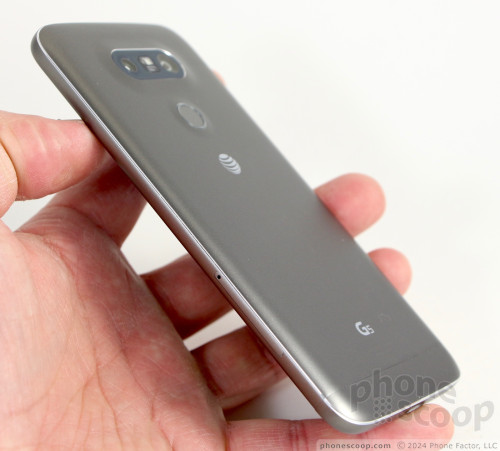
LG may have moved the volume toggle to the side edge, but the screen lock button / fingerprint sensor is still on the back. The button is slightly raised and has a chrome rim to set it apart visually. The rim has the same sharp edge found along the side edges. I was able to find it quickly and accurately (without looking) to unlock the screen. I wish the button's travel and feedback were a bit better; it feels slightly cheap.
One of the major benefits afforded by the G5's modularity is a removable battery. A small button positioned on the left edge of the phone releases the bottom module. I wish the button were larger, but I understand why it is rather small (to avoid accidental presses). Press the button in all the way and it will eject the module, which contains the battery. Pull the module to slide the battery out. It should go without saying that ejecting the module automatically powers the phone down. The battery itself is snapped into the module. You have to forcibly detach it from the stock module if you want to swap batteries or change to a different module. Sticking the battery back in does not automatically boot the phone back up. I kind of hoped it would.
The G5 shows lots of promise. I think it's a better overall device than the G4, but a lot of its potential depends on how much you're willing to sink into the LG Friends / modules.
By itself, without any modules, the G5 is a solid entry from LG that covers all the key selling points.
Modules / Friends
LG has two modules, or LG “Friends”, prepared for the G5. The first, the CAM Plus, is being offered by some carriers as a freebie with the phone. The CAM Plus clips onto the bottom of the G5 and does several things.
First, it acts as a camera grip and helps make the G5 more comfortable to hold and use to shoot images over a long period of time. Second, it adds several physical buttons to assist in picture taking, including a jog dial for zooming and separate keys for capturing photos and video. Third, it improves battery capacity thanks to an included lithium-ion battery of its own.
I used the CAM Plus and found that it does in fact help with picture taking. It reduces hand fatigue when shooting images, and can improve stability, too. What's bonkers to me is that the CAM Plus doesn't include a tripod mount. What the hell? Even so, of the two modules announced, this one is a no-brainer for people who plan to take lots of pictures.
The second module is a DAC (digital-to-analog converter) created by Bang & Olufsen. It boosts sound output via the headset jack from 16-bits to 20-bits. This is an incremental update that most people will not be able to hear, even if they opt for the extra Bang & Olufsen headphones designed to accompany the DAC. This module makes some sense for sound engineers or audiophiles who want higher-quality output from their phone, but not for normals.
Not all “Friends” are modules that attach to the bottom of the phone. Other LG Friends include the 360 CAM, 360 VR, and Rolling Bot. Of these three, the 360-degree camera seems the most useful, and is one of the accessories being offered by carriers at launch. As the name implies, it can capture 360-degree photos and video. We were only able to look at these products briefly during the Mobile World Congress trade show in February and can't offer a full assessment on their performance at this time. (Although our first impression of the VR goggles was not positive.)
LG gave the G5 a dedicated app — appropriately called LG Friends Manager — to help manage and control these accessories.
In my view, LG needs to get more attachable modules to market quickly, lest the phone lose the appeal of its modular design. LG has asked third-party companies to come up with ideas, and even has developer guidelines in place. As yet there aren't any new modules announced.
Screen
The G5's display is amazing. It's an LCD panel that measures 5.3 inches across the diagonal and contains 2560 by 1440 pixels, which is quad HD resolution. I can't overstate the clarity of the display, it is truly impressive. You won't see individual pixels anywhere and on-screen elements are completely smooth. Color is accurate and brightness is good. The screen was visible outdoors, even under sunny skies. Viewing angles are decent, though brightness does drop a little bit when the phone is tilted from side-to-side. There's no doubt in my mind the G5 has one of the best displays available on a smartphone. It absolutely goes toe-to-toe with the Galaxy S7 and puts the smackdown on the iPhone 6s screen.
Signal
The G5 performed above par when compared to other AT&T devices we've tested in the greater New York area. It provided access to 4G throughout our review period and never dropped down to 3G. Calls connected on the first dial without fail, and the phone didn't miss any or drop any calls while I used it, even when in the car at highway speeds. Data performance was excellent. The G5 provided quick web browsing, swift app downloads, and speedy social networking. Peak downloads measured up to the fastest we've seen.
Sound
I'd say the G5 is a very good voice phone, at least on AT&T's network. Voices come through the earpiece speaker clearly, though perhaps a bit harshly. The earpiece provides plenty of volume and makes for easy-to-hear calls in almost every locale. I was able to carry on conversations at coffee shops even with hissing espresso machines in the background. Walking around the mall? No problem. In a speeding car? You'll be fine. Those I spoke to through the G5 said I was loud and clear.
The speakerphone is just as good. The entire speakerphone is contained within the removable module and pushes out plenty of sound. You can use the speakerphone at home, the office, in the car, and just about anywhere else you need to go.
Ringers and alerts are correspondingly loud. The vibrate alert is mediocre, but I like that you can customize the vibrate alert patterns.
Battery
LG gave the G5 a 2,800 mAh battery. Several carriers are offering a spare battery and charging cradle with the purchase of a G5. I'd take advantage of that offer if you can, but wouldn't worry about it overmuch if you can't. The included power cell managed to deliver a full day of battery life under heavy use, though just barely. I encountered the 15% warning threshold by dinner time most days, but was able to stretch the G5's battery to bedtime by turning screen brightness down. On the occasions when I used the phone less heavily, it more easily pushed through to the end of the day.
LG included several specific battery-saving tools that help manage battery life. The first ramps down background processes and the always-on display, while the second is meant strictly to help prevent games from crushing the battery.
The G5 supports Quick Charge 3.0, which makes most battery-saving tools moot. Plugging the phone in for an hour (with a Quick Charge 3.0 charger) will fill the battery up to 60% capacity; leave it in for 90 minutes to get a full charge. Even Quick Charge 2.0 chargers can top off the G5's battery in about two hours.
The G5 doesn't have wireless charging. (A metal back makes this pretty much impossible.)
Last, it's worth pointing out that the CAM Plus module contains a 1200mAh battery and would help improve the G5's battery life when installed.
Bluetooth, GPS, NFC, WiFi
All the ancillary radios functioned perfectly. The Bluetooth radio impressed me, in particular. I took several calls through my car's hands-free system and the conversations were surprisingly clear. Music sounded excellent when pushed to my favorite Bluetooth speaker.
The G5's NFC radio was helpful in pairing the device with several Bluetooth accessories, and it supports Android Pay for mobile payments. In other words, it did its job.
I was pleased with the GPS radio's performance. Working with Google Maps, the G5 was able to locate me in less than three seconds most of the time. Accuracy varied a bit, but it came as close as 10 feet. Maps was able to successfully get me from here to there with real-time navigation. The G5 was far more accurate than my car's in-dash nav unit.
WiFi worked well.
Software
Lock Screen
LG cooked up what it calls Always-On Display to improve the lock screen experience. It essentially mimics Motorola's Active Display in that it shows the time and some base-level notifications on the screen all the time, in a way that doesn't impact battery life too much. I like that the Always-On display uses a thick font for the clock, making it easy to read from a distance. If you receive texts, emails, or calls, the incoming alerts will generate a large pop-up on the screen. The popup covers the clock and will remain there for a second before it reappears in smaller form under the clock. It works just fine.
For some reason, you can choose to put your signature (your actual name, in digital cursive) in the Always-On Display, rather than the clock. This makes absolutely no sense to me whatsoever and I'm baffled by its inclusion.
Like older LG phones, the G5 includes KnockOn and Knock Code. KnockOn will wake the display when the G5 is double-tapped. You see the same Always-On clock/notification combo at the top of the screen, in addition to shortcuts to voice search, the phone, and the camera. This is most helpful when the phone is sitting on a table or desk. KnockCode is a security tool you can select to unlock the phone through a custom pattern of taps.
If you prefer, you can set up a fingerprint to secure the G5. It takes only a few moments to set up several fingerprints and I found it to be the fastest way to unlock the phone by far. It's very quick and reliable.
Home Screen
The G5 runs Android 6.0 Marshmallow with a refreshed user interface skin from LG. The most notable aspect of the UI is that LG has done away with the app drawer. LG says it will provide another version of the launcher that includes an app drawer for those who prefer to use one. (A third-party launcher would also "fix" this issue.)

There are just two home screen panels active when you first boot the G5. The main screen holds a couple of widgets, several apps/folders, and the app dock at the bottom. The second screen is populated with folders containing other apps. The app drawer is gone, so all installed apps live somewhere on a home screen. As per usual, the G5 supports multiple home screen panels, widgets, and shortcuts.
The device allows you to switch up wallpapers and other behaviors with ease. I like that apps can be arranged in various grid configurations (4x4, 4x5, 5x5) to allow for more effective use of the screen's real estate, and, using menu options, you can elect to hide apps you know you won't use often as well as bring them back when needed. You can control behaviors such as fonts, font size, button arrangement, screen effects, and so on.
EasyHome will, if you wish, simplify the interface for novice phone users. Most people should skip EasyHome.
The G5 includes LG's Smart Bulletin app, which is essentially a personal dashboard. You have to activate it yourself if you want to use it. Once turned on, Smart Bulletin anchors itself as the left-most home screen panel. It places your calendar, music settings, and LG Health tools all in one spot.
LG didn't mess with the Quick Settings panel too much. It includes five toggles across the top, as well as a slide to control screen brightness. You can customize which toggles appear in the Quick Settings screen and swipe the toggles to see more. The panel also allows you to access, act on, and dismiss notifications. The main settings tools are broken down into several tabs by default, but you can adjust it so they appear on a single screen. I found it easy to use.
With a Snapdragon 820 and 4 GB of RAM under the hood, the G5 is among the fastest phones I've ever tested. It does everything in an instant. I couldn't find anything to tax the phone, including games and Google Cardboard VR. It's very quick.
Camera
LG took care to give the G5 a functional and powerful camera app. The G5 doesn't have a physical camera button, but you can launch it from the lock screen or with a long press of the volume-down button.

First, I need to point out that the G5 has three cameras, two on the back and one on the front. The main sensor on the back captures 16-megapixel images with a 75-degree, normal field of view. The secondary sensor on the back captures 8-megapixel images with a 135-degree, wide-angle field of view. The front-facing sensor captures 8-megapixel images. A toggle appears on the top of the camera app that allows you to jump from the regular-angle camera to the wide-angle camera any time, no matter which shooting mode you're in.
There are three base shooting modes: simple, auto, and manual. These are available from the left side of the screen.
The simple mode is exactly that. It offers no controls. None at all. Tap the screen to take a picture. Swipe the screen to swap between front and rear cameras. Toggle between normal and wide angle. That's it.
Things get more interesting in auto mode, which is the default setting. In auto mode, the camera interface includes controls running down the left and right sides of the screen. Five quick action buttons appear on the left: settings, flash, user-facing camera, modes, and menu. These buttons cannot be customized. There are separate buttons on the right for the camera and video camera so you can easily snap stills while filming video. Auto mode can be further broken down into several shooting options that include normal, panorama, slow-mo, time-lapse, pop-out, multiview, and snap modes.
Pop-out mode creates a picture-within-a-picture effect. In other words, you have and smaller box in the middle of the frame with the subject, and larger box around the outside to which you can add effects (blur, fisheye distortion, etc.) to make the central image pop. See the photos below.
The multiview mode lets you shoot pictures with both rear cameras and the front camera at the same time so you can include yourself in a three-panel montage. This can be fun. There are several different panel configurations and you can arrange them however you wish. We saw this feature on the LG V10 last year.
The snap shooting mode lets you assemble video clips into a 60-second story. You can shoot with 1, 2, or 3 panels in a variety of configurations. A quick tap of the shutter button records a 3-second segment. You can piece together up to 20 of the 3-second clips, or press-and-hold the shutter button to record longer clips up to 60 seconds long. It takes some practice to use effectively.
Manual mode is for the knowledgeable user who wants to be creative. As the name implies, you have full control over everything: white balance, focus, brightness, ISO, and shutter speed. Shutter speed can be set as long as 30 seconds. You can also set the auto-exposure to lock. Each has its own slider that lets you, for example, alter the focal point between close and far. As you do this, the screen changes to provide a preview of how the resulting image might look. It gives you some neat insight into how each individual part of the exposure process may affect the final result. Manual mode may be overwhelming for novice users.
LG also has a "Say Cheese" feature to trigger the shutter with your voice.
The G5's camera software is extraordinarily quick to focus and snap photos. It's a powerful app that performs well.
Photos/Video
LG typically hits a homerun with the camera of its flagship phones. While I give the G5 an A for its incredible camera app, I can't quite do the same for the photos it takes.

In general, fundamentals such as focus, exposure, and color are all good. The main camera sensor produces consistently good results. If all you do is take simple shots with the main camera, you'll be relatively pleased.
The wide-angle camera seems to have trouble with color and exposure. You can see how bland the images are and how they have spots that are over- and underexposed. Moreover, the wide-angle camera introduces obvious optical distortion (see the front end of my car) when too close to objects.
I ran into another frustrating issue: fingerprints all over the lens covers. Thanks to the positioning of the fingerprint sensor on the rear of the phone, it's not all that hard to smudge the lens cover. This had a direct impact on some of my pictures, which were hazy.
The front camera takes great selfies. A beauty mode helps clean up your skin if you're interested.
At the end of the day, the overall quality of the pictures is close to those produced by the Galaxy S7 and iPhone 6s, but impressive results were somewhat harder to come by. In other words, the G5's competitors more effortlessly take good pictures. With the G5, it feels like it takes a bit more work to get good shots.
The phone can record video up to 4K, but you may as well stick to full HD. I was very pleased with the video results, which were consistently better than the regular pictures.
You can rely on the G5 to serve as your main imaging and video device.
LG Stuff
LG made improvements to its LG Health application. It now includes beginning and advanced modes to cater to individual needs. LG suggests new users start with the beginner toolset and move to the advanced tools once they've reached a certain level of health and fitness. If you're interested in doing things like tracking steps and diet, that's easy to do with LG Health. It handles walking, running, climbing and cycling and provides an overview of your progress.
LG's ever-present QuickMemo tool is on board. It's accessible via the Quick Settings panel. As always, it takes a screenshot and then opens a basic editor so you can annotate the screenshot and share it with others. It works fine.
The G5 has an infrared emitter and LG's feature-rich TV remote application. It takes but a moment to configure the app with your TV and other home theater equipment. I wish phones more consistently offered TV remote functionality. LG's is among the best available.
AT&T Stuff
AT&T is the worst. The junk AT&T preloaded on the G5 borders on malware. AT&T assails you with its own apps and services during the initial setup process and actively populates the notification tray with suggestions for its own apps. Filling up the notification tray with advertisements is not okay, AT&T, not at all. Stop it.
Then there are the 15 AT&T-branded and partner apps that cannot be deleted, such as LookOut, Games, Uber, Yellow Pages, Plenti, and DriveMode. Let's not forget the two DirecTV apps, including a remote control for DirecTV set-top boxes. I don't want this garbage on my phone, AT&T.
Wrap-Up
LG is taking a bit of a risk with the G5. I wholeheartedly appreciate and respect that LG is going for something completely different with this phone. The company could easily have played it safe and churned out a bland metal-and-glass phone to take on the S7. Instead, it's taking a chance on the modular design and accompanying Friends to offer a unique experience.
At launch, the modular aspect of the phone is somewhat hamstrung by the lack of actual modules. I mean, there's the CAM Plus and the DAC. Wheee? LG needs more snap-in modules ASAP.
If you completely ignore the modular design and look at the G5 as just any old smartphone, it still packs a punch. The metal chassis is a big step up for LG, the screen absolutely kills, and the phone does a great job with data and voice performance. Battery life is on par with its competitors. The camera is better than most, but not without issues.
The Android UI works fine, and extras like Always-On Display, Smart Bulletin, and QuickMemo round out the phone's toolset. I'm not happy with the carrier-added bloat, and some people may cringe at the missing app drawer.
If you're in the market for a high-end Android phone, the G5 should be on your shortlist. I like that LG is forging its own path rather than following a more well-worn road. The G5 isn't perfect, but the promise of the swappable modules and all-around good performance make the G5 worth recommending.
Comments
No messages


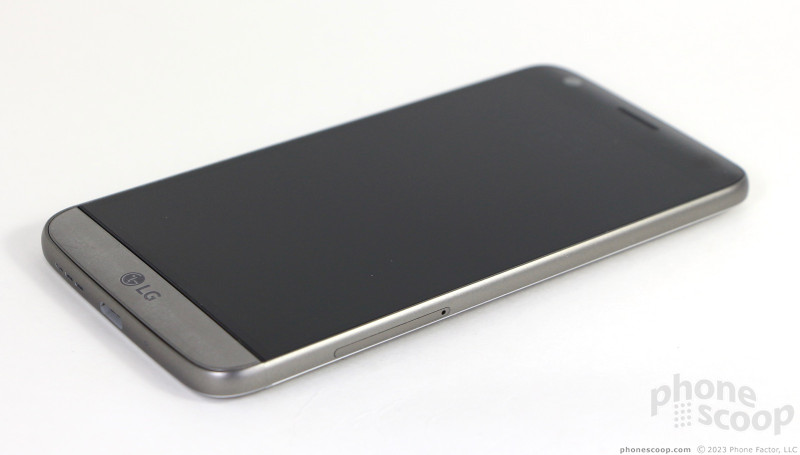











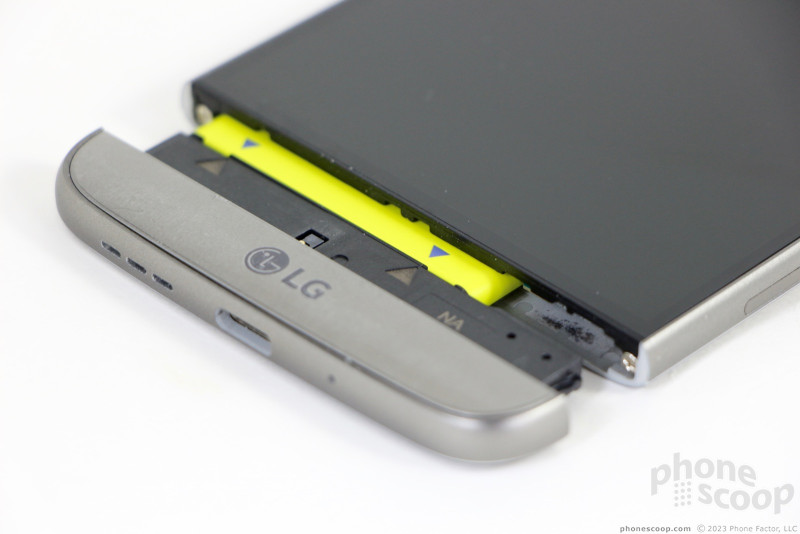










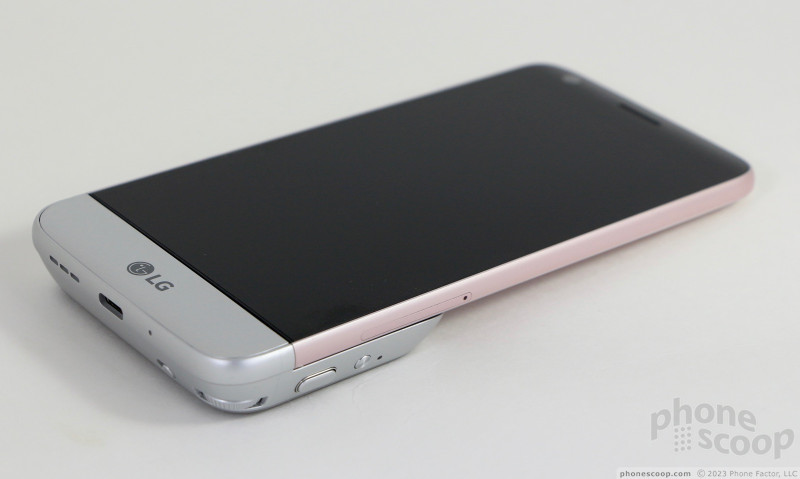















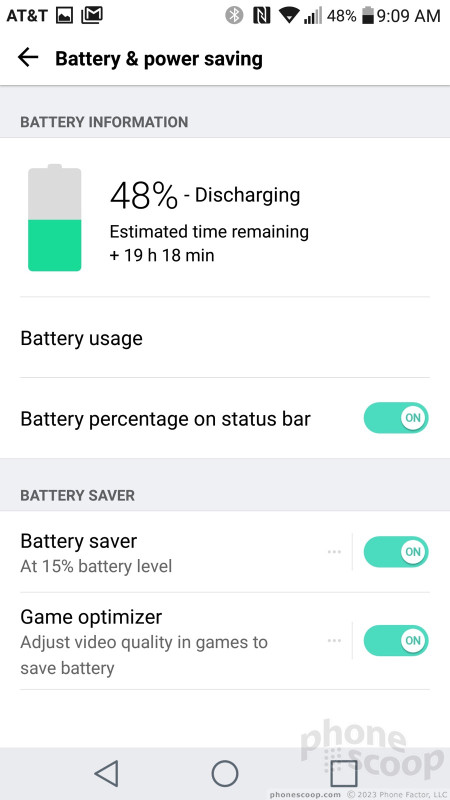




































































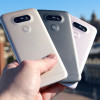 Hands On with the LG G5
Hands On with the LG G5
 LG Announces the V20 With Android 7, Second Screen, and Dual Cameras
LG Announces the V20 With Android 7, Second Screen, and Dual Cameras
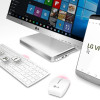 LG's VPInput App Lets PCs Control Smartphones Via Bluetooth
LG's VPInput App Lets PCs Control Smartphones Via Bluetooth
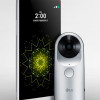 LG Begins Selling G5 Friends Directly Online
LG Begins Selling G5 Friends Directly Online
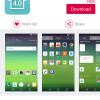 LG Home 4.0 Brings App Drawer to G5
LG Home 4.0 Brings App Drawer to G5
 LG G5
LG G5




